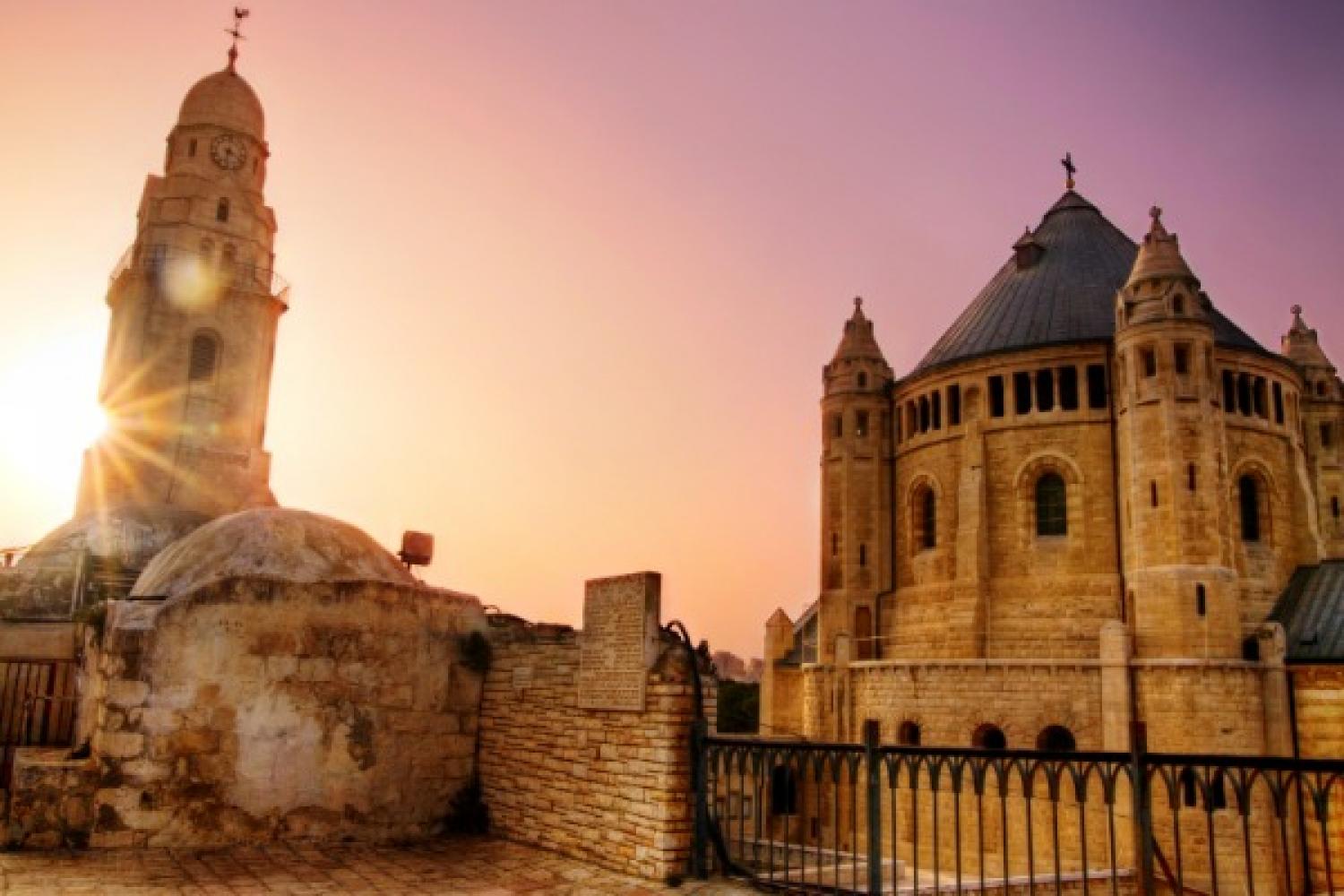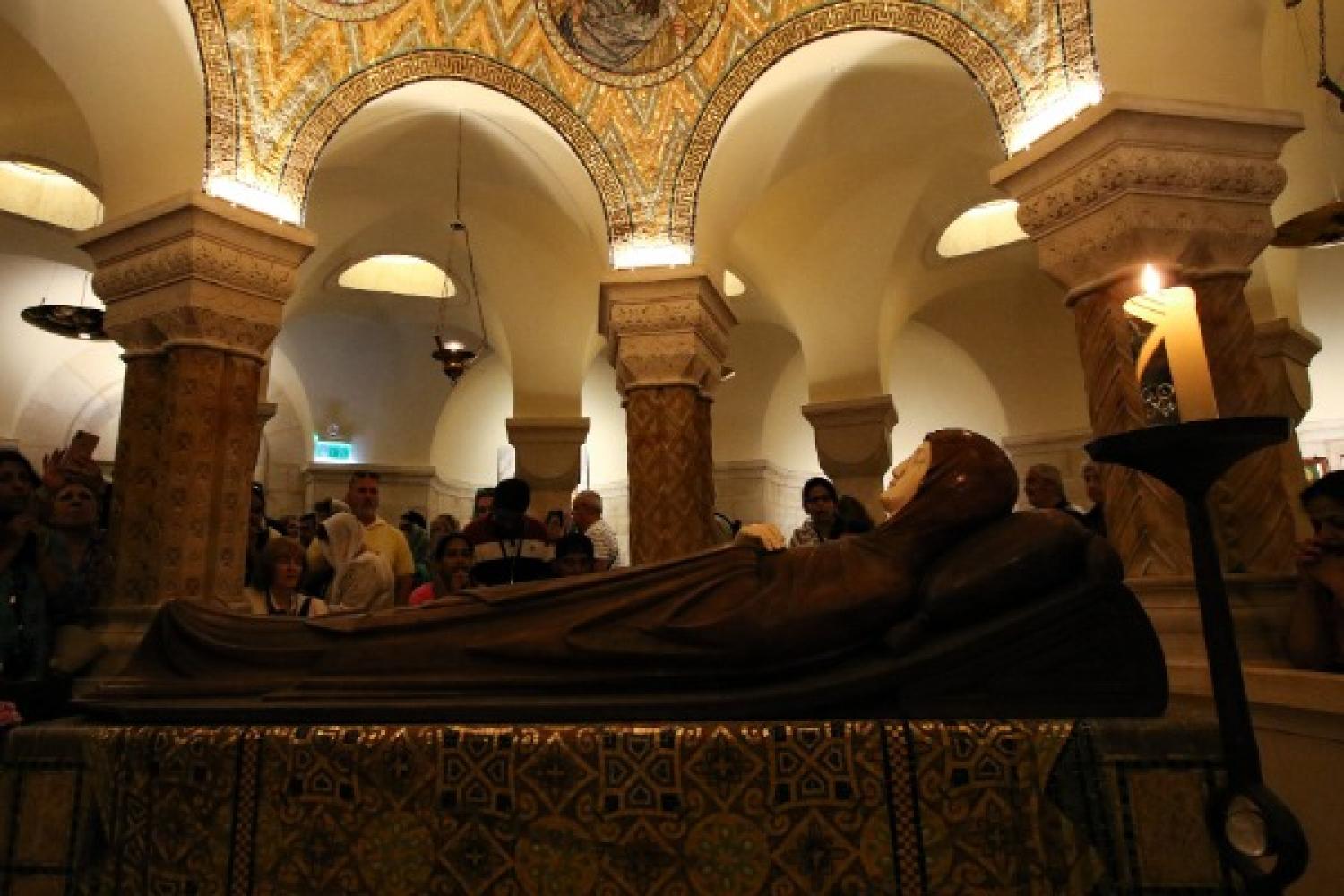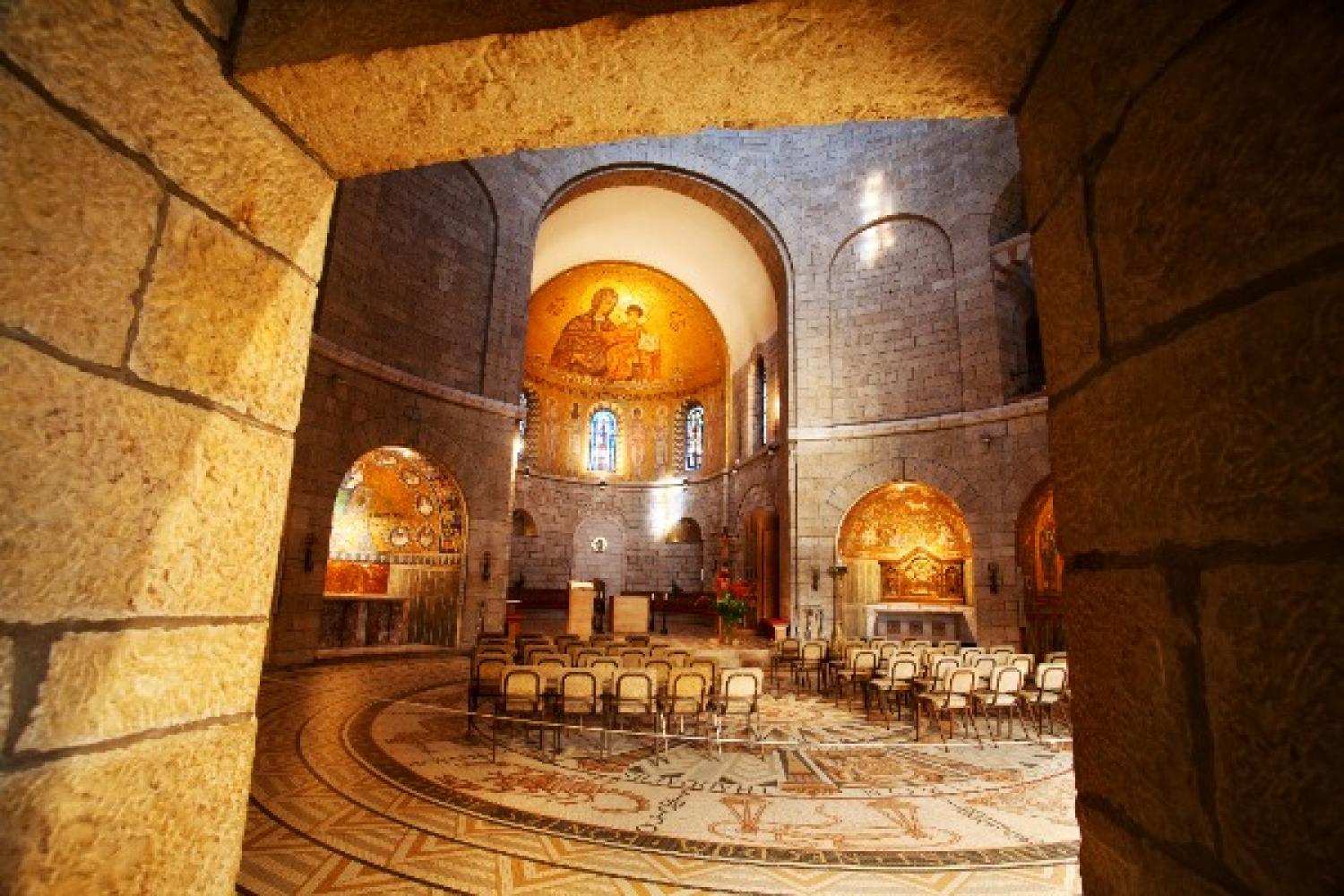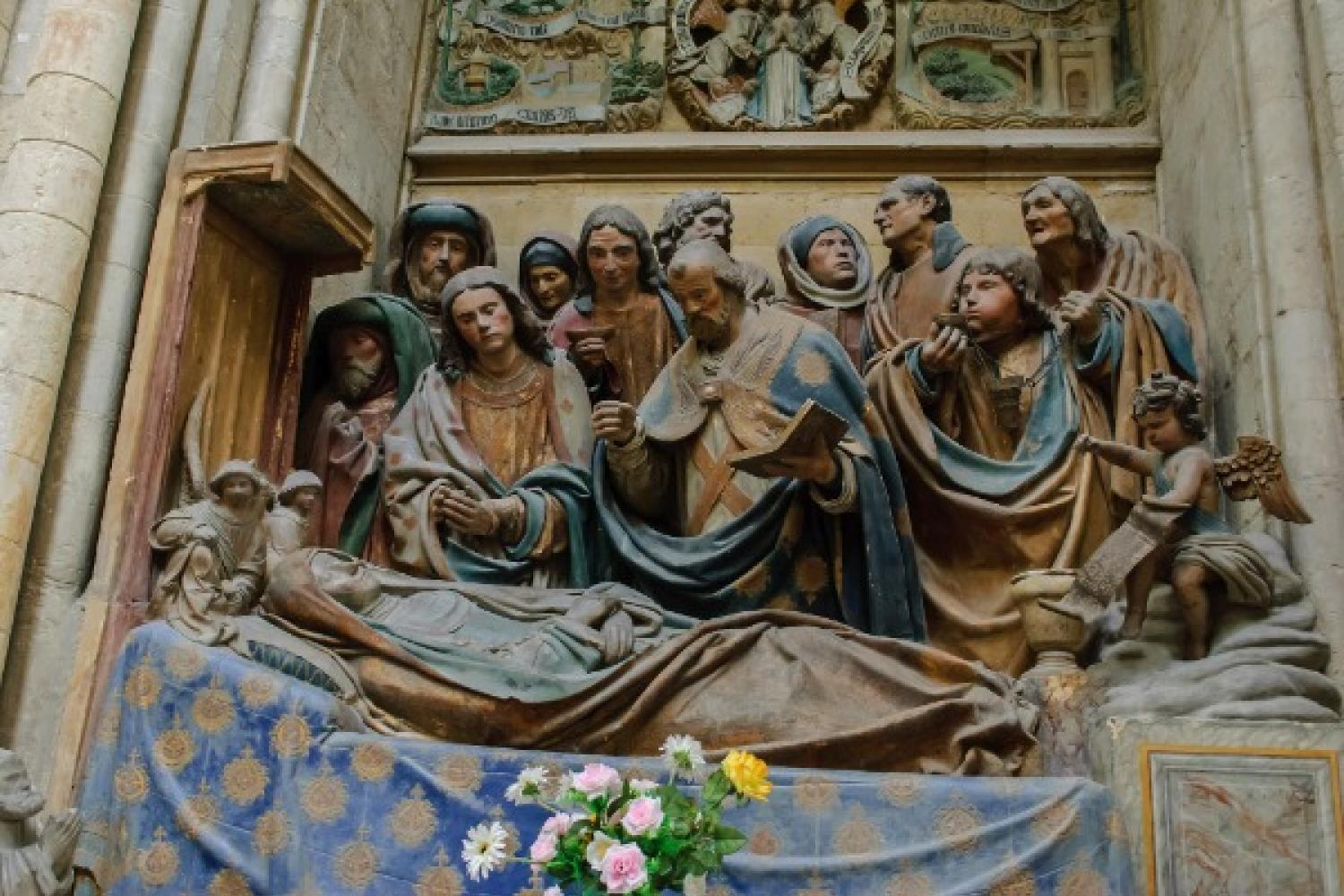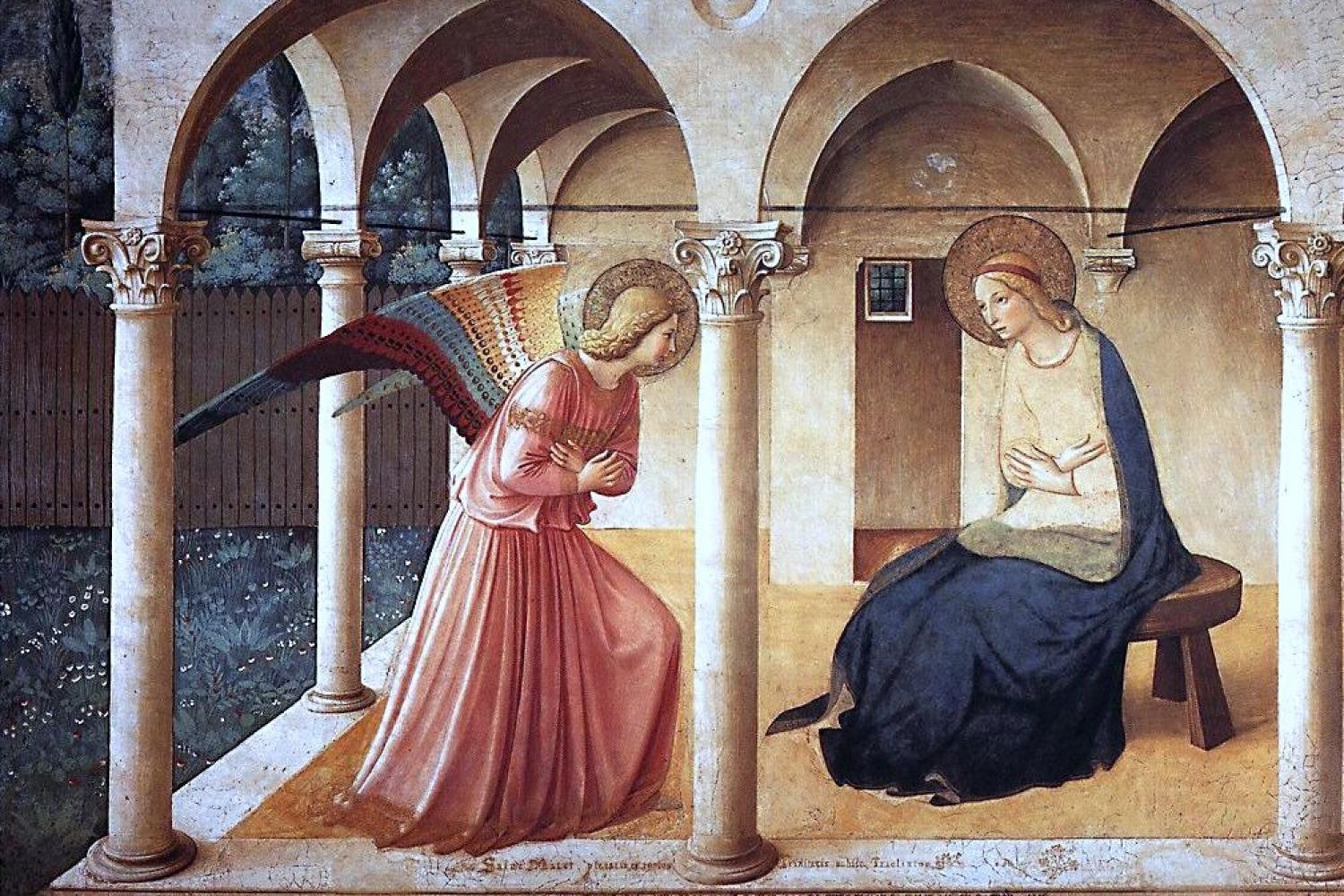
George Weigel's Letters to a Young Catholic explores and comments on Catholic culture, examining history and theology, art and architecture, literature and music. This article is the fourth in a series that walks through Weigel's work letter by letter, providing imagery to enhance the reader's experience. Here we explore "Letter Four, The Dormition Abbey, Jerusalem: Mary and Discipleship." Click here to view the entire series.
Of the many sites associated with the life of Christ and the early Christians, the present Abbey of the Dormition is one of the more recently constructed buildings. Built of golden stone and perched atop the rocky outcrop of Mount Zion just outside the walls of the Old City of Jerusalem, it was constructed at the turn of the last century by Kaiser Wilhelm II over the ruins of the Byzantine abbey Hagia Maria Sion. It is built “in the round” in imitation of Charlemagne’s cathedral at Aachen, which in turn imitated the round or octagonal plan of the late Roman church of San Vitale in Ravenna, Italy. The apse of the upper church glows with mosaics depicting the Virgin and Child, while the intricate mosaic floor details the salvation of the world.
In the center of the crypt below, encircled by an octagonal shrine, is a marble sarcophagus with an image of the sleeping Virgin atop, hands folded and eyes closed. The church commemorates “the falling asleep of Holy Mary,” or her dormitio, which according to tradition happened on Mount Zion. The Dormition of the Theotokos, Mother of God, is a solemn feast for the Orthodox; however, in the Latin church, the focus isn’t so much on her dormition, as it is on her bodily assumption into heaven and on the promise it holds for Christians after the Resurrection.
It is in the crypt before the sleeping Virgin that Weigel chooses to reflect on Mary and the model of discipleship that she presents in his fourth chapter of Letters to a Young Catholic. For Weigel, Mary offers an example of complete trust in and total commitment to the will of God. Her unhesitating fiat to the message of the angel, her decisive dedication to whatever the providence of God put before her, and her open acceptance of her Son’s passion and death mark her as the first and best disciple of Christ. While some may protest that to honor Mary in this way is obstruct the path to God at best or to construct an idol at worst, Weigel invites readers to consider her words at the wedding of Cana as a pattern for action: quodcumque dixerit vobis facite, or “Do whatever He tells you.” Throughout her life, Mary pointed to her Son and directed others to do the will of God, just as she did, without reserve and holding nothing back for herself. In this way, she becomes a fully human example of how to follow Christ totally.
In an age in which we are encouraged to “keep our options open” and to avoid any commitment that might bind us totally, Mary’s life was a series of unreserved and repeated fiats, from the Annunciation to the Deposition of the body of her Son. Mary’s life has taught generations of Christians that the way to happiness and heaven—the way of the disciple—is to be found in the complete and trusting surrender of our hopes, our futures, and our dreams to One who is Hope and whose dreams for our future are bigger than we can imagine.
Photo Attribution A: "Jerusalem Dormition Abbey 2" by Israel_photo_gallery is licensed under CC BY-ND 2.0.
Photo Attribution B: "Dormition" by Lawrence OP is licensed under CC BY-NC-ND 2.0.
Photo Attribution C: "Jerusalem Dormition Abbey 6" by Israel_photo_gallery is licensed under CC BY-ND 2.0.
Photo Attribution D: "Fécamp Abbey, Dormition de la Vierge" by Davide P. is licensed under CC BY-NC-ND 2.0.
Photo Attribution E: "Michaelangelo's Pieta 5450" by Stanislav Traykov is licensed under CC BY 2.5.
Photo Attribution F: "House of the Virgin Mary Ephesus 1" by Damian Entwistle is licensed under CC BY-ND 2.0.
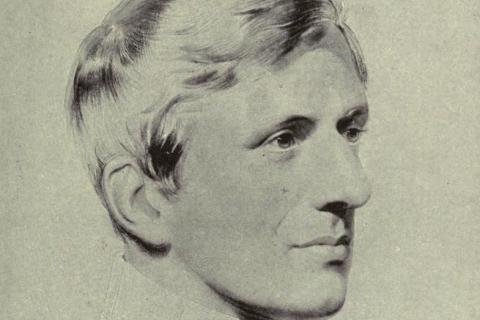
Next: Newman and 'Liberal' Education
In the fifth chapter of "Letters to a Young Catholic," Weigel explores the Birmingham Oratory to reflect on the conversion, life, and theology of St. John Henry Newman.
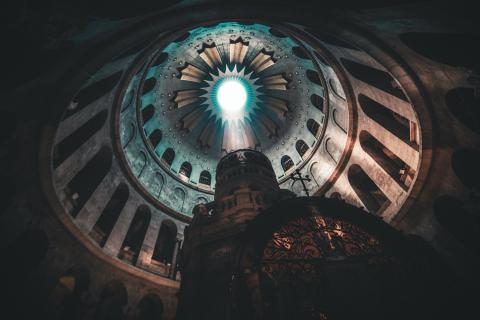
Previous: The Face of Christ
In the third chapter of "Letters to a Young Catholic," Weigel explores two places that confront us with the reality of Christ: a monastery on Mt. Sinai and the Holy Sepulchre.

The First Draught
To receive the Weekly Update in your inbox every week, along with our weekly Lectio Brevis providing insights into upcoming Mass readings, subscribe to The First Draught.
